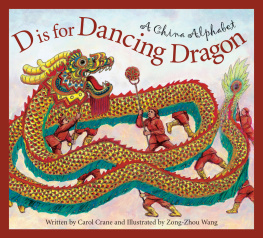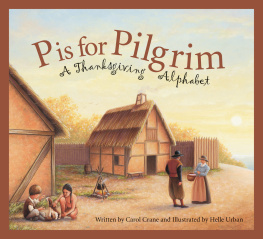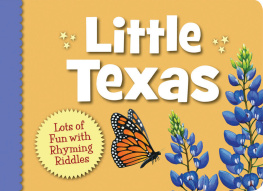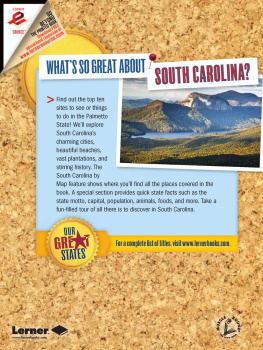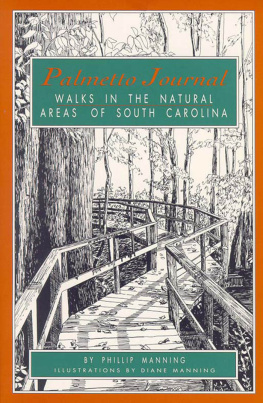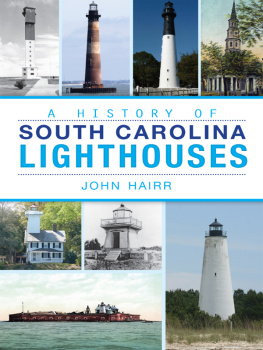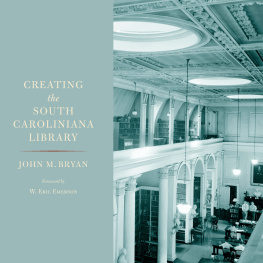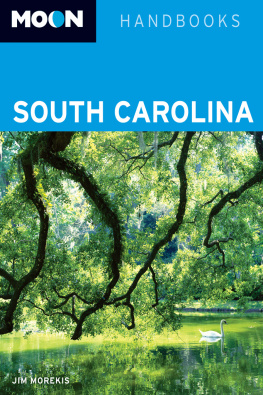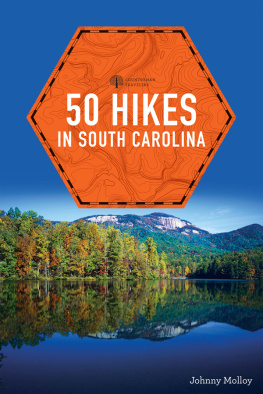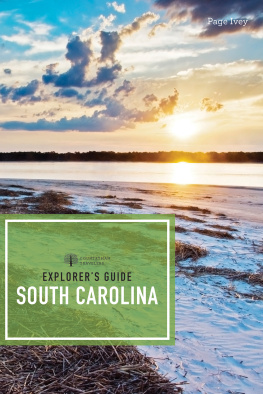P is for Palmetto
A South Carolina Alphabet
The spirit of South Carolinaits people, places, and landmarkshave been beautifully captured in this book, with illustrations by renowned artist Mary Whyte. Author and national education consultant Carol Crane brings together the history, geography, and wildlife of South Carolina with entertaining poems and fascinating facts. Test your knowledge and share the wonder of the Palmetto State with P is for Palmetto: A South Carolina Alphabet.
P is for Palmetto
A South Carolina Alphabet

Written by Carol Crane and Illustrated by Mary Whyte
To Howard and Fran Ward,
life-long residents of Pawleys Island,
and to Diane and Morgan Crane.
CAROL
For Rachel Hodges,
a great First Lady of South Carolina,
in appreciation for her role as ambassador
of reading in the state.
MARY
A
Once you have seen the Angel oak tree, you will never forget this awesome sight. The tree shades an area of 17,000 square feet with enormous limbs that touch the ground and then head right for the sky. This magnificent live oak tree is considered to be over 1,400 years old and is the oldest living thing east of the Mississippi River. The tree gets its name from the Angel family who once owned the land on which it grows. This tree is found on Johns Island, south of Charleston.
A is for the Angel oak tree, massive limbs greeting the sky.
I wish it could tell me the stories, of years it has seen pass by.

B
During plantation days, large work baskets were used for collecting and storing rice, grain, cotton, fish, and shellfish. The large baskets were woven of bulrush. Vegetables, fruits, and bread were stored in sweetgrass baskets made for home use. Basket making involved the whole family. Men and boys gathered the materials, while women and girls wove the baskets. Long hours of work are involved in making the baskets. Some of the designs take two or three months to weave. The grasses used in the baskets are from wetlands and marsh areas in the lowcountry. This type of basketry is one of the oldest crafts of African origin in America.
B is for sweetgrass Baskets, a rich history of African-American art.
Woven by families for 300 years, a heritage that comes from the heart.

C
Columbia is located in the center of South Carolina. It was named after Christopher Columbus. Columbia was laid out by the legislature in 1786 as the new state capital. All of the rules and laws of our state are made and voted on by our representatives, senators, and our governor. The statehouse has some of the largest columns in the world. Each column stands 43 feet high, weighs 37 tons and has been cut from a single piece of stone.
Now C is for Columbia, the capital of our state.
Here the rules and laws are made that make our state so great!

D
Drayton Hall is the only plantation house on the Ashley River to survive the Revolutionary War and the Civil War unchanged. After two wars, hurricanes, earthquakes, and seven generations of the John Drayton family, the house remains in nearly original condition. The house has no running water, electric lighting, or central heating. Just think: no television, no refrigerator, or heat during those cold winter nights!
D is for Drayton Hall, a majestic southern plantation.
Built on the Ashley River in 1742, one of the oldest in our nation.

E
South Carolina designated the eastern tiger swallowtail as the official butterfly of the state. It is of particular interest to gardeners and farmers with orchards, as the butterfly is a great pollinator. It can be seen throughout South Carolina along streams, rivers, wooded swamps, and in towns and cities.
E is for the Eastern tiger swallowtail, a colorful butterfly to see.
Flying from flower to flower, flitting and soaring, wild and carefree.

F
Francis Marion fought the British during the Revolutionary War. As a captain, he formed a company of men to fight for freedom by fighting the British in small surprise attacks. This company of men, who became known as Marions Men, would set up their camps in the swamps of South Carolina where the British could not find them. In 1936, our state honored Francis Marion by naming 250,000 acres of land the Francis Marion National Forest.
The swamps that Francis Marion took shelter in are a wonderful part of South Carolina. The Congaree Swamp National Monument has very tall loblolly pine treessome are 300 years old and 145 feet tall. This swamp is also home to the bald cypress tree, which has knees (or roots) that grow from the root system to well above the average water level. Flooding occurs at least ten times a year and leaves deposits of rich soil. The swamp has some of the tallest trees in the east, which form one of the highest canopies (or roofs) in the world, making a perfect home for woodpeckers, bobcats, owls, deer, and other wildlife including snakes and skinks.
Now F is for the Swamp Fox.
Francis Marion was his true name.
A hero of the Revolutionary War, a Carolinian of great fame.

G
The Grand Strand (meaning shore) is on the Atlantic Ocean. For 60 miles, it includes all the shoreline from Winyah Bay and Georgetown, northeast to Little River Neck on the North Carolina state line. Pawleys Island, the oldest resort beach in South Carolina and possibly the U.S., Murrells Inlet, Litchfield Beach, and Myrtle Beach are some of the places vacationers go to swim, hunt for shells, fish, and enjoy the beautiful seashore. The Intracoastal Waterway is west of the Grand Strand. This is a water road that boats use to travel safely from north to south or south to north, instead of the large ocean. The salt marshes are also an important part of the coastal plains.
G stands for the Grand Strandcool ocean breezes, sun, and sand.
Fishing piers stretching out into the ocean, families walking hand in hand.

H
The horse has been an important part of South Carolinas story. From plowing fields, to hunting, racing, jumping, and pleasure riding, this valiant steed has been part of the scenery. The many horse lovers of our state are found riding through the ocean surf at dawn, riding the mountain trails, or watching the training of race horses in Aiken and Camden, S.C. The Thoroughbred Hall of Fame is found in Aiken, S.C.


